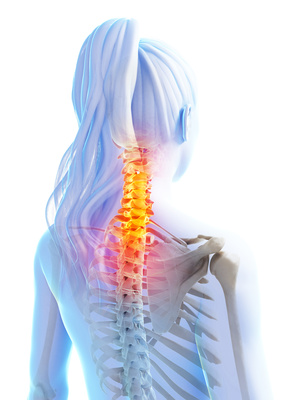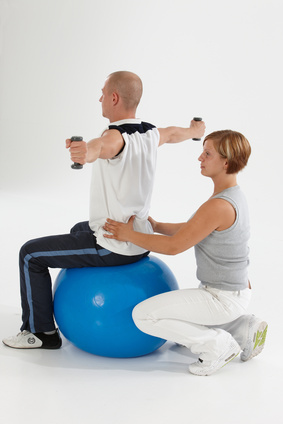 Spondylolysis is the result of defect or stress fracture in the vertebrae of the spinal column. When the defect or injury worsens to the point where the vertebrae can’t remain in its proper position and begins to shift, it’s called spondylolisthesis. If too much slippage occurs, it may require surgery to prevent the bone from pressing on nerves and physical therapy will be needed for a full recovery.
Spondylolysis is the result of defect or stress fracture in the vertebrae of the spinal column. When the defect or injury worsens to the point where the vertebrae can’t remain in its proper position and begins to shift, it’s called spondylolisthesis. If too much slippage occurs, it may require surgery to prevent the bone from pressing on nerves and physical therapy will be needed for a full recovery.
Spondylolysis is the condition, while spondylolisthesis is the advanced form of the condition. It’s most often seen in adolescents, particularly those who participate is sports and athletics. There’s a genetic component to spondylolysis and the rapid growth that occurs during adolescence can increase the risk of the condition developing.
Sports that include football, diving, weight lifting, rowing and gymnastics place additional stress on the spine that can cause pain and slippage without a fracture. Many people don’t have any obvious symptoms, while others experience spasms, pain in the lower back and shortening of the hamstring that can affect posture and gait..


 Spondylolysis is the result of defect or stress fracture in the vertebrae of the spinal column. When the defect or injury worsens to the point where the vertebrae can’t remain in its proper position and begins to shift, it’s called spondylolisthesis. If too much slippage occurs, it may require surgery to prevent the bone from pressing on nerves and physical therapy will be needed for a full recovery.
Spondylolysis is the result of defect or stress fracture in the vertebrae of the spinal column. When the defect or injury worsens to the point where the vertebrae can’t remain in its proper position and begins to shift, it’s called spondylolisthesis. If too much slippage occurs, it may require surgery to prevent the bone from pressing on nerves and physical therapy will be needed for a full recovery. The condition is now termed as active or inactive, depending upon whether the patient is experiencing lower back pain. Spondylolysis may feel like a strained muscle and repeated stress exacerbates the condition. As it worsens, it can press against nerves and cause changes in the way muscles function, along with bowel or bladder dysfunction.
The condition is now termed as active or inactive, depending upon whether the patient is experiencing lower back pain. Spondylolysis may feel like a strained muscle and repeated stress exacerbates the condition. As it worsens, it can press against nerves and cause changes in the way muscles function, along with bowel or bladder dysfunction. Bracing is effective for many cases of spondylolysis and careful monitoring by our physical therapists ensures that healing progresses as it should. We have multiple treatments to relieve pain, inflammation and promote healing. Physical therapy is a critical element in rehabilitation should surgery become necessary to repair the damaged vertebrae.
Bracing is effective for many cases of spondylolysis and careful monitoring by our physical therapists ensures that healing progresses as it should. We have multiple treatments to relieve pain, inflammation and promote healing. Physical therapy is a critical element in rehabilitation should surgery become necessary to repair the damaged vertebrae.